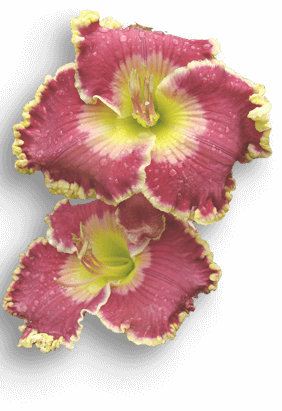Spider Mites are not insects but Arachnids, a group which also includes spiders and ticks. Spider mites are a common problem. While there are several species, the illustrated Two-spotted Spider Mite, Tetranychus urticae, is one of the more common mites you are likely to encounter, and it feeds on a wide range of plants. Since these mites are extremely small, magnification is necessary to get a good look at them. The two-spotted spider mite is pale yellow or green often with two brown spots; at times some spots may be an orange-reddish color. These pests feed by piercing the undersurface of the leaves with their mouthparts and sucking up the plant juices. When leaf surfaces develop pale speckling, a closer look may reveal patches of webbing underneath the leaves, and with the aid of a magnifying lens you will probably also notice many tiny round eggs. (See the entry on thrips for an image of these eggs.) Heavy damage causes leaves to look dry and discolored, and since spider mites are more of a problem in hot, dry conditions, this may be wrongly attributed solely to the weather. Reproduction is rapid resulting in many generations a year, and the use of certain insecticides can actually increase mite populations. They are also favored by high levels of nitrogen fertilization. Many other insects and mites feed on spider mites and their eggs, including some thrips. Keep plants sufficiently watered to prevent drought stress and frequently spray the leaves with water, especially underneath, as forcefully as possible without damaging the plants to remove and discourage the mites.
- Image used with permission from University of California Statewide IPM Project, Jack Kelly Clark, photographer. Any additional uses of this image must be received from the copyright holder directly – AHS does not have permission to grant additional usage of this image for any purposes.
- Image showing the stippling of spider mite damage (lower leaf) compared to thrips damage (upper leaf). Image by Susan Bergeron
- Spider mites and their damage on a daylily leaf. Image by Susan Bergeron
See also: Pests




